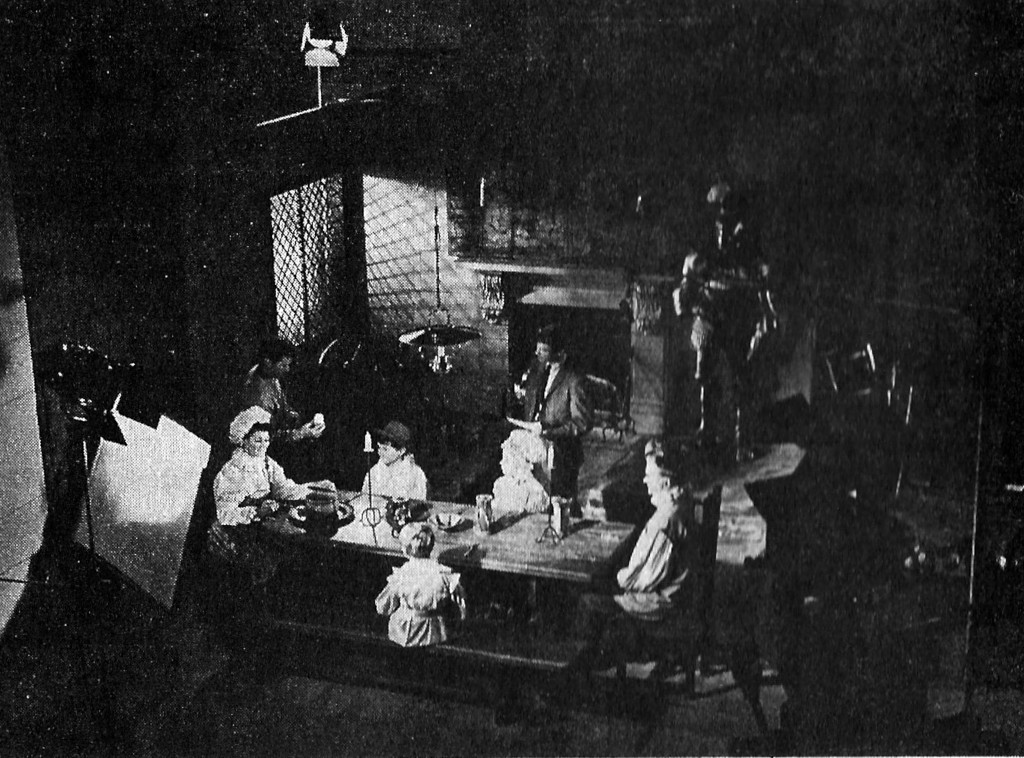A Viewpoint report by Molly G. Elliot, of Auckland
From the New Zealand TV Weekly. September 25, 1967

Inside the spacious Auckland studios. In the foreground is New Zealand's only crane camera dolly, bought from Metro-Goldwyn-Mayer in America. - Insert: Robert Steel.
Already, as New Zealand's home grown television finds its feet and races to a higher degree of maturity comes the question: why can't we produce some of our own series? lt's the biggest challenge facing New Zealand Theatre today and it's been more than sheer chance that Auckland photographer, Robert Steele, supported his own confidence in the future of the Dominion's TV potential with a bold, practical programme of expansion.
Although some viewers complain about the predominance of overseas features in New Zealand Television programmes, the stage is set - literally - for larger local developments. A year ago, Auckland photographer Robert Steel opened New Zealand's largest studio at Greenlane. Its 60,000sp. ft. incorporates the country's largest stage, 75ft. by 45ft.
Here, he produces mostly TV commercials although he has also made three wide-screen features. At the moment, however, the small financial return for shooting New Zealand programme material, does not make it worthwhile, although he does make some TV films for overseas markets.
Representing only a small portion of his business, these New Zealand travel and industrial featurettes sell to the ABC, BBC and American networks.
The Lawson Quins
The latest Steele production, Five Are One, covers the Lawson Quins' first year. Produced for the International Wool Secretariat with Selwyn Toogood as narrator, it has been adapted for TV, translated into 13 languages and sold mostly in Europe. Robert Steele has grown up with the New Zealand film industry. For years, he also owned a portrait studio, but this is now closed. Before the war, he filmed in Australia where as official photographer at the AFV School, he made training features. Before taking up TV work, he concentrated on travel and promotional films for airlines and the Government Tourist Bureau.
Members of his eight-man staff, recruited in New Zealand, have all had overseas experience. They include director David Fowler, who joined the studio from an advertising agency after some years with the National Film Unit for whom he directed and edited two award winners, Holiday for Susan, and Jetobatics.
Photography director Sigmund Spath, an Austrian, has worked in London.
Merrie England Set

Case Jackson, set designer, made a name for himself with oil paintings on black velvet. For a recent commercial, he devised a Tudor set, called "Merrie England," all toasted and tapestried, chimneyed and colonnaded, guilded and groyned. This required authentic costumes made by Olive Prince, of Mt. Eden, who owns the largest theatrical library in the Southern Hemisphere.
The studio also has its own hairdresser and make-up artist.
Mr Steele considers that TV has an important part in New Zealand's promising film future. Therefore, he has equipped his studio for the use of overseas producers making films here. He has already received enquiries from several seeking information about feature films.
Future of Colour
What about colour TV? Though he sees it as still a long way off for this country, Mr Steele is prepared if only because his company has made more colour film than all others in New Zealand combined.
We now have six film production houses but these would not exist without the National Film Unit laboratory,
says Mr Steele. They get blamed for every hitch and fault, but we have always had marvellous co-operation from them,
he said.
For most work he uses 35mm cameras, although some work does demand 16mm. Equipment as up-to-date as any in the world includes New Zealand's only crane dolly bought from Metro-Goldwyn-Mayer, and two 10,000-watt lights, the only ones in the country.
When I visited the studio, staff had grouped nine refrigerators and deep-freezes on stage for a commercial. The same space has held four cars; no problem since double doors allow vehicles to drive straight in if needed.

On a more mundane level, facilities include staff kitchen and lunchroom, plus special showers and dressingrooms for those working on commercials. Besides the control room, an editing room contains the latest movie-ola that runs film through at any speed and even from frame to frame in a succession of winkings, heavings and flickerings. In a soundproof studio voices are fitted to film. Because a 30-second cartoon commercial requires 750 pictures for smooth movement, these are worked out in an animation room. A small projection room runs commercials through for clients who, if in Auckland from out-of-town, can make their headquarters in two oflices with phones, a necessary amenity since 60 percent of the studio's work comes from Wellington.
Vantage Point
Reception office and staff facilities are centred on two levels at the front of the vast grey building; the second floor opens on to a catwalk with stairs down to the studio floor - an excellent vantage point.
Though unlikely to need anything on the extravagant scale of a combination of the Coronation, Churchill's funeral and the "Second Coming" narrated by Sir Laurence Olivier, New Zealand, as it finds its TV feet, will have in this studio an excellent base for home-grown productions.


Comments powered by CComment